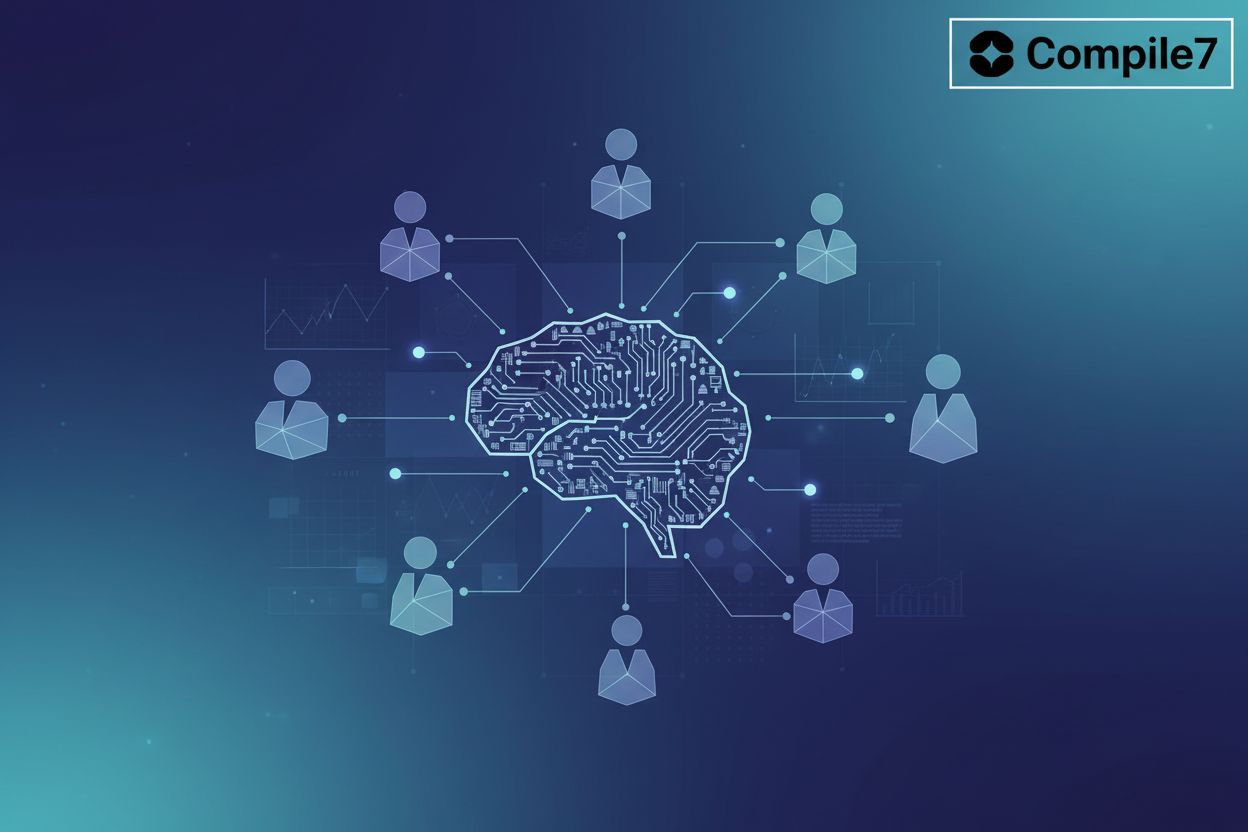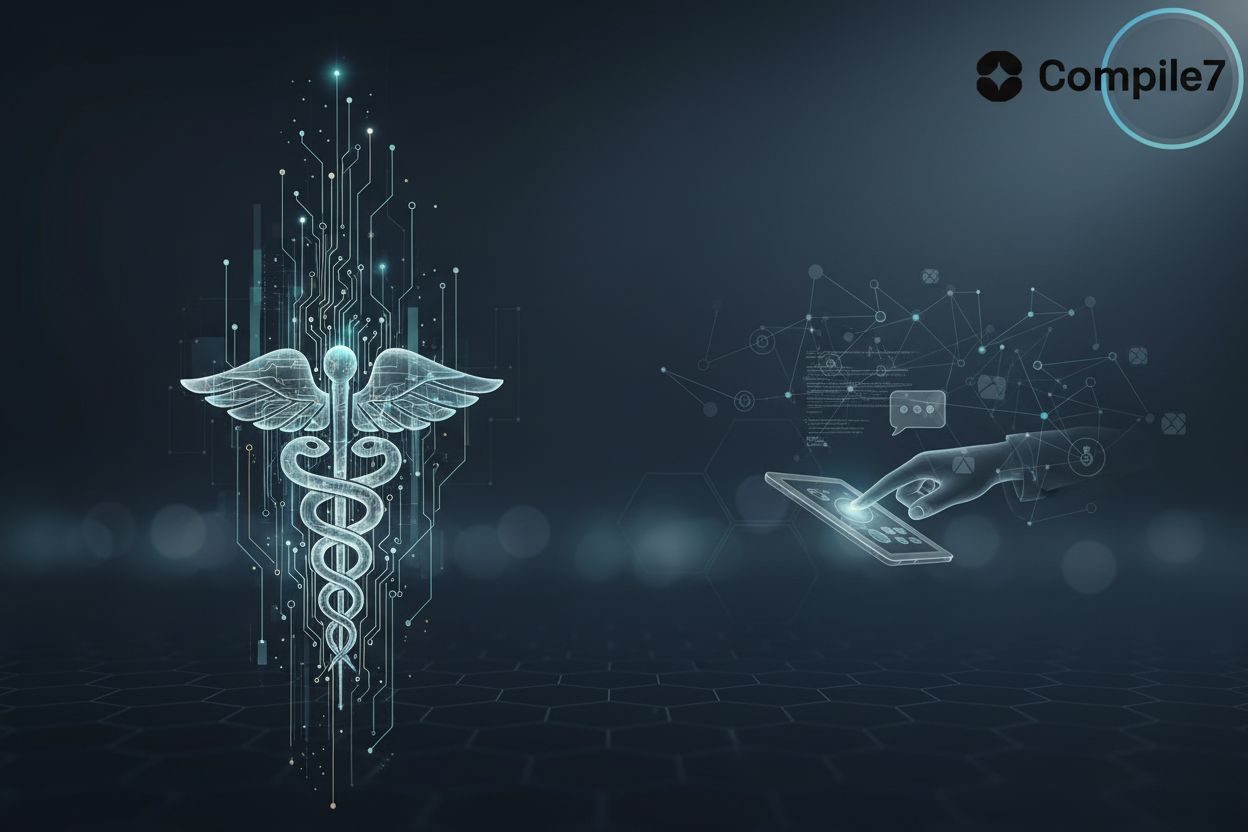AI Agent Orchestration Frameworks
TL;DR
Understanding AI Agent Orchestration: The New Frontier of Automation
Alright, let's dive into ai agent orchestration – what it is and why it's becoming a big deal. Think of it like this: instead of just having one robot doing a task, you've got a whole team of 'em working together.
Basically, ai agents are like specialized digital workers. They automate complex tasks, making decisions and interacting with systems with minimal human intervention, as mentioned in "20 Best AI Agent Platforms".
- Orchestration is how you coordinate these agents to hit a common goals. (What is AI Agent Orchestration? - IBM) It's not just about one agent doing its thing; it's about making sure everyone's on the same page.
- So how does it differ from traditional automation? Well, traditional automation often involves a single, pre-programmed sequence. (RPA vs Traditional Automation: Key Differences and Benefits) Orchestration, on the other hand, is more dynamic. It's about coordinating multiple agents to handle complex tasks that a single agent just can't manage.
Single ai agents can only get you so far. They struggle with those multi-step processes that are a real part of business.
- Orchestration brings a bunch of benefits. We're talking about increased efficiency, improved accuracy, enhanced scalability (that's a big one), and better resilience.
- Enhanced scalability is achieved by distributing tasks across multiple agents, allowing for parallel processing and the easier addition of new agents as demand grows. This means your system can handle more work without breaking a sweat.
- Think about customer service. Instead of one agent trying to handle everything, you could have agents specializing in billing, technical support, and general inquiries, all working together to solve customer problems.
An AI Agent Orchestration Framework is essentially a system or platform that provides the tools and structure to define, manage, and execute complex workflows involving multiple AI agents. It acts as the central nervous system, coordinating the agents' actions, communication, and resource allocation to achieve a common objective.
It's got a few main parts:
- Agent Definition: This is where you spell out what each agent does, what tools they can use, and what their role is in the bigger picture.
- Workflow Management: It determines the sequence of tasks, including conditional logic (if this, then that) and error handling (what happens if something goes wrong?).
- Communication Protocols: This is how agents talk to each other and share data.
- Resource Management: How resources (like computing power and data) are allocated and managed across agents.
- Monitoring and Debugging: Tools for keeping an eye on how agents are doing and fixing any issues that pop up.
Think of monitoring and debugging like being able to "see" what each agent is doing and why.
Why Orchestration Matters for Enterprise AI
So, why should businesses even bother with all this ai agent orchestration stuff? It's not just some tech buzzword; it's actually pretty darn important for making ai work in the real world.
Handling Complexity: Most real-world business problems aren't simple, single-step tasks. They involve multiple stages, different types of data, and require diverse skill sets. Orchestration lets you break down these complex problems and assign them to specialized agents, each good at its own part. Think of a doctor diagnosing a patient – it's not just one thing, it's a whole process involving tests, history, and different specialists.
Boosting Efficiency and Productivity: When agents are coordinated, they can work in parallel, hand off tasks smoothly, and avoid redundant effort. This means things get done faster and with fewer errors. Instead of waiting for one person to finish a whole chain of tasks, multiple agents can chip away at it simultaneously.
Improving Accuracy and Reliability: By using agents that are experts in their specific domains, you increase the chances of getting accurate results. Orchestration frameworks also often include error handling and fallback mechanisms, making the whole system more robust and less likely to fail.
Enabling Scalability: As your business grows and your ai needs expand, orchestration frameworks make it easier to scale up. You can add more agents, distribute workloads more effectively, and adapt to changing demands without a complete system overhaul.
Facilitating Collaboration: Orchestration isn't just about machines talking to machines. It also enables better human-ai collaboration. You can design systems where humans are involved at key decision points, providing oversight, or handling exceptions, making the ai a true partner rather than a black box.
Driving Innovation: By automating more complex processes, businesses can free up human talent to focus on higher-value, creative, and strategic work. This can lead to new product development, improved customer experiences, and overall business innovation.
Basically, orchestration takes ai from being a cool trick to a powerful, integrated business tool.
A Deep Dive into Leading
Alright, let's get into the nitty-gritty of ai agent orchestration frameworks. You know, the stuff that really makes these agents sing, or at least hum along nicely.
LangGraph, huh? It's all about using graphs to define how your ai agents work together. Think of it like a flowchart, but way more powerful.
- LangGraph's architecture really leans into this graph-based workflow definition. It's like mapping out a whole process visually, which can be super helpful when things get complicated.
- With LangGraph, you can build stateful, multi-agent systems. That means the agents remember what they've done and can make decisions based on that history. Plus, it handles conditional logic – if this happens, then do that.
- One of the big strengths of LangGraph is its visual workflow editor. Drag and drop, baby! Plus, it's got real-time debugging so you can see what's going on as it happens. And- it's set up for team collaboration.
- Real-time debugging in LangGraph allows users to step through the execution of their graph, inspect the state of each node (agent or tool), and understand the flow of data and decisions as they happen. This makes troubleshooting much faster.
- But- it isn't all sunshine and rainbows, LangGraph can have a steeper learning curve than other options, and it's maybe less accessible to non-technical users.
Now, CrewAI takes a different tack. It's all about organizing your ai agents into specialized teams. Think of it like assigning roles in a play.
- CrewAI's approach to organizing ai agents into specialized teams makes it easy to manage complex tasks. Each agent has a role, and they all know what they're supposed to do.
- What makes CrewAI tick? It's all about the role-playing, memory management, and tool integration. These are the things that help agents collaborate effectively.
- Crewai has a user-friendly gui, which is always nice. It also boasts robust task decomposition, meaning it can break down big jobs into smaller, manageable chunks. Plus, it's got advanced guardrails to keep things on track.
- However, CrewAI is depend on LangChain, which might limit what you can do with it. This dependency means that CrewAI inherits LangChain's capabilities and limitations. For instance, if LangChain has specific ways of handling certain types of data or integrations, CrewAI is bound by those. It might also mean that certain advanced customizations or integrations that aren't directly supported by LangChain would be difficult or impossible to implement within CrewAI. And it don't emphasize industry-specific templates.
Microsoft AutoGen is all about handling those complex, open-ended tasks that don't have a clear-cut solution. It's designed to be adaptive and flexible.
- AutoGen has an adaptive architecture that can handle tough, open-ended tasks. It's not just about following a script; it's about figuring things out as you go.
- The Orchestrator agent is the key. It manages task execution and adapts to whatever challenges pop up.
- AutoGen's got some serious strengths. We're talking modularity, scalability, flexibility, and a model-agnostic framework. That last one means it can work with different ai models.
- But... It's heavily reliant on the orchestrator model, which can be a bottleneck. This reliance means that the orchestrator agent becomes a central point of control and decision-making. If this agent is slow, overloaded, or has limitations in its own capabilities, it can slow down the entire system or prevent complex interactions from happening efficiently. It can also become a single point of failure. And it requires some serious technical expertise if you want to customize it.
Lastly, we got the aws Multi-Agent Orchestrator. This framework focuses on intelligently distributing tasks to the right agent.
- aws Multi-Agent Orchestrator is all about intelligent task distribution. It makes sure the right agent gets the right job.
- At the center of it all is the Classifier. It intelligently routes user requests to the best agent based on what the user wants and what the agent is good at.
- One of the big selling points is that it works seamlessly with aws services. It's also cost-efficient because it routes tasks intelligently. And it has robust monitoring to keep an eye on everything.
- However, the degree of customization might be limited compared to other frameworks. Plus, it's a relatively new offering, so it might not be as mature as some of the others.
Imagine a healthcare company using LangGraph to automate patient diagnosis. The framework could map out the entire diagnostic process, from initial symptom assessment to final diagnosis, with different ai agents handling each step. Or consider a retail company using CrewAI to manage its marketing campaigns. With CrewAI, the company can create specialized teams of ai agents, each responsible for a different aspect of the campaign, such as content creation, social media promotion, and email marketing.
So, which of these frameworks is right for you? Well, that depends on what you're trying to do.
- If you need fine-grained control and complex workflows, LangGraph might be your best bet.
- If you're looking for role-based collaboration, CrewAI could be a good choice.
- If you're tackling open-ended tasks, AutoGen might be the way to go.
- And if you're already heavily invested in the aws ecosystem, the aws Multi-Agent Orchestrator could be a natural fit.
Comparing Frameworks: Key Considerations for Your Business
Alright, so you're trying to figure out which ai agent orchestration framework is the right fit, huh? It's kinda like picking the perfect tool from a fully-stocked shed – depends on what you're building.
Each framework takes a different route to get the job done. LangGraph uses a graph-based system, Crewai goes with a role-based approach, and AutoGen is all about being adaptive.
- LangGraph is like a super detailed map for your agents. It's great when you need tight control over complex workflows. You can visually map out agent interactions, which is a lifesaver when things get complicated.
- CrewAI, on the other hand, organizes agents into specialized teams. Think of it as assigning roles in a play. This is really useful for structured tasks where each agent has a clear job.
- AutoGen's adaptive architecture shines when you're dealing with open-ended tasks. It's like having a team that can figure things out on the fly.
How well do these agents actually talk to each other? Communication is key for complex problem-solving.
- LangGraph and AutoGen emphasize flexible communication between agents, allowing them to exchange data and delegate tasks as needed.
- CrewAI structures communication through defined roles, ensuring agents know who to talk to and what to expect.
- the way agents exchange data, delegate tasks, and resolves conflicts makes all the difference.
Memory is key. ai agents need to remember what they've done to make smart decisions.
- Some frameworks are better at short-term memory, holding context within a session. Others excel at long-term memory, letting agents learn from past interactions.
- Also, entity memory can be a big deal. Entity memory refers to an agent's ability to store and recall specific details about entities (people, places, objects, concepts) it has encountered during its interactions. Instead of just remembering a general conversation, it can remember specific facts about a particular customer, product, or event. This is crucial for providing personalized responses, making context-aware decisions, and building a more coherent understanding of the world.
- Think about it: the more memory, the more reliable the ai agents become.
You don't wanna just let these ai agents run wild, right? You need a way to keep an eye on things.
- Human-in-the-loop integration lets you (or someone on your team) step in and take control when needed.
- This is super important for ethical reasons, making sure the agents are behaving responsibly.
- Plus, it helps build trust in the system, knowing a human can always override things if needed.
So, think about what kinda workflows you got, how much control ya need, and how important it is for the ai agents to play nice with each other. Then pick the framework that fits.
Choosing the Right Framework: A Practical Guide
So, you're staring down a list of ai agent orchestration frameworks and wondering which one's gonna be your golden ticket? It's a tough call, kinda like choosing the right surfboard – gotta match it to the waves, ya know?
First things first, you gotta nail down exactly what problem you're trying to solve. Don't just jump on the ai bandwagon 'cause it's trendy.
Really dig into what business problem you wanna tackle with these ai agents. Is it streamlining customer service, automating invoices, or something else entirely?
Figure out the key performance indicators (kpis) that'll tell you if you're actually winning. are we talking faster response times, fewer errors, or a boost in sales?
Think about how complex your workflow is and how much a human needs to be in the loop. is it a simple task that can run on autopilot, or does it need a human to step in sometimes?
Now, let's get real and look at each framework with a critical eye.
Consider each framework's architecture, multi-agent skills, memory, and how well it lets humans jump in. LangGraph, for example, has a graph-based approach, while Crewai leans on roles.
Think about how easy it is to use, how well it scales, and how it plays with your current setup. You don't want something that's gonna be a total headache to integrate.
Don't forget about security and compliance. After all, you want to keep your data safe and follow all the rules. According to AI21, ensuring regulatory compliance is key for both security and user adoption.
Don't go all-in right away! Start with a small test project to see how things shake out.
Roll out a small-scale pilot to test your chosen framework in a real-world setting. It's like a dress rehearsal before the big show!
Get feedback from anyone involved to see where you can improve, then tweak it all. Getting user input is critical for success.
Keep at it, tweaking the design and how you're doing things based on what you hear back. Refine your implementation with feedback.
To sum it up, picking the right ai agent orchestration framework isn't a one-size-fits-all thing. It's about zeroing in on your specific needs and finding the tool that's best suited to get the job done.
The Future of AI Agent Orchestration: Trends and Predictions
Okay, so what's next for ai agent orchestration? I mean, it's not gonna stay where it is, right? Things are moving fast, its kinda wild.
We're gonna see agents that learn on their own using reinforcement learning. Think agents that get better and better with each task, without someone having to reprogram them all the time.
Expect more multimodal ai. That means agents that can handle text, images, audio – the works! So, instead of just reading emails, they'll be watching videos, too.
And- a big one: ethics. We're gonna have to get serious about making sure these agents are fair and responsible, otherwise, things could get messy.
More complex coordination. We're talking about agents that can handle seriously complicated tasks. Like, imagine a supply chain where agents are constantly adjusting to real-time data.
Better human-ai teamwork. The goal is to make it easier for people to work with these agents, so it feels more like a partnership and less like wrestling a robot.
And- get this: marketplaces for ai agent setups. Imagine being able to buy pre-made agent teams that are certified to do specific jobs. Customizability is key for both security and user adoption.
So, ai agent orchestration is just getting started. It’s gonna be interesting to watch where it goes!









